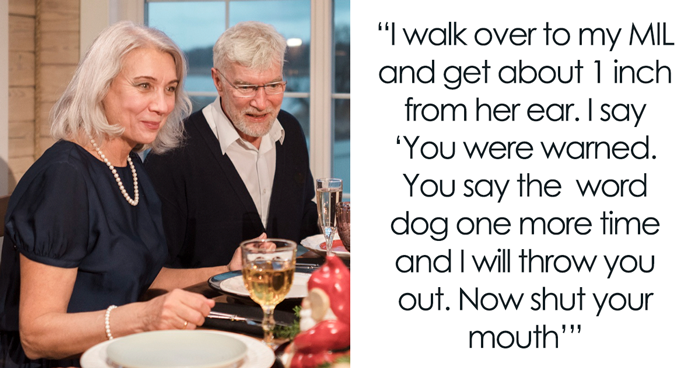
This Map Shows 26 Pastas In Italy, But There’s One Pasta Dish You Must Never Ask For
Italian pasta is a serious business. The art of making pasta and following the guidelines on which sauce to pair with which pasta is almost a sacred topic across Italy. On top of that, each Italian region has its favorite which grew out of tradition and the use of local ingredients. It is estimated that there are more than 350 pasta varieties, and while some can be found throughout the country, many of them are region-specific, such as orecchiette in Puglia, bucatini in Rome, or trenette in Genova – all of them designed to be paired with a specific sauce.
To realize how serious the matter is, try your luck and suggest that fettuccine Alfredo is an Italian classic to a true-blooded Italian. We can’t guarantee the outcome. You might get away with a frown, but on a bad day, the more probable thing is that they will fire various insults at you. Although this combination of fettuccine, butter, and Parmigiano-Reggiano was invented in Rome as an extra buttery version of pasta al burro, it is incomparably more popular in the United States, and most Italians don’t accept the dish as their own.
More info: tasteatlas.com
Instead, TasteAtlas suggests to follow this map and do as the saying goes: when in Rome, do as the Romans do. Try the hearty ragù alla Bolognese (which is always served with tagliatelle) when in Bologna, trenette served with pesto Genovese in Liguria, classic Carbonara in Rome, spaghetti alle vongole in Naples, or pasta chî sàrdi if you want to experience Sicily’s diverse culinary heritage.
Considering the vast number of choices, maybe it is for the best to leave spaghetti & meatballs and the controversial Alfredo to the Americans!
Pizzoccheri alla Valtellinese (Valtellina valley)
This traditional pasta dish combines buckwheat pizzoccheri pasta with potatoes and cabbage, which is seasonally replaced by swiss chard or green beans. All of the ingredients are cooked together and are typically layered with grated Parmigiano Reggiano and Valtellina Casera cheese and garlicky melted butter.
Spatzle Tirolesi (Trentino-South Tyrol)
Spatzle Tirolesi (also known as spinatspatzeln) is an Italian version of the German spätzle, traditionally prepared throughout the region of Trentino-South Tyrol. One of the most classic ways of enjoying this rustic green pasta variety made with boiled spinach, eggs, flour, nutmeg, salt, pepper, and water is in a simple sauce consisting of heavy cream and crispy speck, previously fried in butter.
Agnolotti (Piedmont)
A variety of Italian pasta ripiena (lit. filled pasta), agnolotti are tender, bite-sized pillows of dough, plump with a creamy cheese, meat, or vegetable filling. Unlike ravioli, which are made with two separate pasta sheets and stamped out, agnolotti are made with a single sheet of dough that is folded over the filling and typically cut into little rectangles.
Tortelli (Lombardy)
Tortelli is a variety of Italian stuffed pasta prepared in a few shapes: square, semicircular, or rounded and twisted. One of the most famous dishes featuring this pasta variety is called tortelli con zucca, where tortelli are filled with pumpkin, crushed cookies, and parmesan cheese. The dish is then topped with more cheese and a sauce consisting of butter and sage.
Bigoli in Salsa (Venice)
Bigoli in salsa is an Italian pasta dish and one of the specialty dishes of Venice, although its variations can be found throughout the Veneto region. It consists of whole wheat bigoli pasta in an anchovy and onion sauce. The nutty flavor of bigoli pairs well with anchovies, creating a unique, rich flavor of the whole dish, which was originally consumed during Lent.
Trenette al Pesto (Liguria)
The simplest version of this Ligurian pasta dish consists of trenette noodles (or bavette, alternatively) and pesto Genovese basil sauce – another Ligurian specialty that hails from the city of Genova. However, most traditional recipes also include boiled diced potatoes and green beans, while the pasta sauce gets its creamy richness from a combination of pecorino and parmesan cheese.
Lasagne alla Bolognese (Bologna)
This rich and filling piatto unico (lit. single plate; one-dish meal) is traditionally made from layers of homemade, typically spinach-flavored fresh egg lasagna pasta that is topped with béchamel sauce and a rich meat sauce called ragù alla Bolognese. Lastly, lasagne alla Bolognese is generously sprinkled with the Emilian king of cheeses, Parmigiano-Reggiano, and baked until tender on the inside with a perfectly crisp, browned top.
Tagliatelle al Ragù alla Bolognese (Bologna)
Even though they are often thought to be synonymous, tagliatelle al ragù—one of Bologna’s signature dishes—bears little or no resemblance to the dish known as spaghetti Bolognese in the rest of the world. In fact, the world famous Italian ragù alla Bolognese meat sauce is never served with spaghetti in Bologna. Instead, when it isn’t served over fresh tagliatelle, you will most often find it topping a bed of some other other ribbon-like pasta, such as fettuccine or pappardelle. Regardless of the type of pasta used, what makes or breaks this classic Emilian dish is the ragù itself.
Pappardelle al Cinghiale (Tuscany)
Pappardelle is a famous Tuscan pasta variety. When paired with ragù di cinghiale (made with wild boar), they become one of the region’s best gastronomic experiences. Unlike classic ragù, the one prepared with wild boar has an intense, much stronger flavor achieved by long, slow simmering in a rich sauce of tomatoes and red wine.
Sugo all’Amatriciana (Amatrice)
Named after Amatrice, a provincial town in the Sabine Hills northeast of Rome; the iconic Amatriciana is often considered a part of the “holy trinity of Roman pasta”, together with carbonara and cacio e pepe. Amatriciana was invented in the 17th century by adding tomatoes to the already famous gricia sauce–diced tomatoes are sautéed in fat rendered from juicy bits of guanciale (cured pork jowl), then tossed together with grated pecorino cheese and either spaghetti or bucatini pasta.
Spaghetti alla Carbonara (Rome)
Even though carbonara is considered a typical Roman dish today, its origins are quite vague and often disputed. However, the carbonara we know today is prepared by simply tossing spaghetti with guanciale (cured pork jowl), egg yolks, and Pecorino Romano cheese. Despite its simplicity, this dish remains one of Rome’s favorites, equally popular throughout the country.
Cacio e Pepe (Rome)
This ancient dish with Roman origins is regarded as one of the simplest and most satisfying Italian dishes. Cacio e pepe consists of pasta (usually spaghetti), aged Pecorino Romano cheese, salt, and lots of ground black pepper. This simple meal is so good that the famous chef and television personality Anthony Bourdain described it by saying it “could be the greatest thing in the history of the world.”
Cavatelli al Sugo di Maiale (Molise)
Cavatelli con il ragù di maiale is a traditional pasta dish from Molise. In this hearty dish, cavatelli pasta, locally known as cavatiell, is served in a rich sauce made with onions, pork, sausages, and lots of tomato purée. Cavatelli con il ragù di maiale are best enjoyed hot, served with a generous sprinkle of freshly grated cheese such as Pecorino or Parmigiano.
Spaghetti Aglio e Olio (Lazio)
Even though the official name of this simple, iconic dish literally translates to spaghetti, garlic and oil, the essential ingredient that adds a spicy kick and a nice touch of warmth is the tiny red chili pepper known in Italian as peperoncino rosso, or diavolillo (lit. little devil), as it is affectionately referred to in some parts of the country.
Linguine allo Scoglio (Campania)
One of Italy’s all-time favorites, linguine allo scoglio, often also dubbed linguine ai frutti di mare is a typical southern Italian seafood dish or piatto di mare. This pasta entrée is made with either linguine or spaghetti and a combination of seafood and shellfish, such as clams, mussels, shrimps, and sometimes even calamaretti or baby squids.
Orecchiette con Cime di Rapa (Bari)
Orecchiette con cime di rapa (orecchiette with broccoli rabe) is one of the most popular pasta dishes from the Italian region of Apulia, especially beloved in the region’s capital, Bari. Orecchiette have a perfect shape for scooping up the chunky pieces of boiled broccoli rabe, or rapini – a leafy, green vegetable closely related to turnip. This simple rustic dish is enriched with freshly grated, aged hard cheese and a sprinkle of crushed peperoncino flakes.
Spaghetti alle Vongole (Naples)
Quick and easy to prepare, yet packing some serious flavor, spaghetti alle vongole is a traditional Neapolitan dish consisting of only two key ingredients: vongole clams and pasta. However, there is a heated debate considering secondary ingredients, primarily the tomatoes. Purists adore the original dish, made without tomatoes, while the others prefer a version with crushed tomatoes, or at least with a tomato sauce.
Ciceri e Tria (Apulia)
Ciceri e tria is a traditional Apulian dish with Arabian and Sicilian origins. The dish consists of pasta and chickpeas, and is usually served as a first course in Italian restaurants. Additionally, the dish can be enhanced with onions, carrots, garlic, or black pepper.
Pasta e Alici (Calabria)
Simple and quick to make, pasta e alici is a typical cucina povera dish – extremely delicious and filling, although it consists of only a few basic ingredients. Crispy toasted breadcrumbs, peperoncini, olive oil, chopped tomatoes, and anchovies, tossed over al dente cooked pasta create a dish full of strong, yet well-combined flavors.
Pasta alla Norma (Catania)
This Sicilian classic is traditionally made with tomato sauce, eggplants, ricotta cheese, and fresh basil. The dish is said to be named in honor of La Norma, the famous opera composed by Vincenzo Bellini in 1831. According to legend, while he was working on the opera, Bellini frequented a local restaurant in Catania, where he would always order the same pasta dish.
Pasta chî Sàrdi (Palermo)
One of Sicilian favorites, this seemingly simple pasta dish of supposedly Arabic origins is an amazing combination of flavors and textures. The sauce for pasta chî sàrdi is delicately flavored with saffron and made with the freshest possible sardines, wild fennel, pine nuts, and sultanas. As for the pasta itself, bucatini are the classic choice, but some prefer a thicker type of pasta like bigoli or perciatelli.
Spaghetti al Nero di Seppie (Sicily)
Spaghetti doused in a dark cuttlefish ink sauce is one of the classic Italian dishes whose origin is associated both with Sicily and the northern Veneto region. The sauce is usually composed out of sliced cuttlefish that is fried alongside garlic and olive oil and is later coupled with white wine and cuttlefish ink, with the occasional addition of tomatoes.
Culurgionis d’Ogliastra (Province of Nuoro)
Widely known as Sardinian ravioli, these delicious handmade dumplings are shaped to resemble an ear of wheat, and they are traditionally filled with potatoes, pecorino cheese, lard, onions, garlic, and mint. Another common filling includes ricotta, spinach or chard, and saffron. Culurgiònes are typically served doused in a flavorful tomato sauce and sprinkled with freshly grated pecorino.
Fregola ai Frutti di Mare (Sardinia)
Fregola or fregula is a pasta variety from Sardinia, made with semolina flour and water. Fregola is most often paired with seafood and cooked like a risotto. For this dish, it is slowly simmered in a mixture of olive oil, garlic, and the freshest mixed seafood, soaking up all the juices released during the cooking process.
And last but not least – Fettuccine Alfredo (Rome)
This luscious dish is simply an extra-buttery version of pasta al burro, an Italian classic made with butter and Parmigiano-Reggiano cheese. The story of fettuccine Alfredo dates back to 1908 in Rome. Chef Alfredo Di Lelio first created this dish for his pregnant wife out of desire to create something simple, yet tasty and nutritious, and he subsequently began serving it at his restaurant. Legend has it that the American silent movie stars Mary Pickford and Douglas Fairbanks discovered this dish in the late 1920s during their honeymoon in Rome. They loved it so much that they started serving it to their friends upon returning to Hollywood. Soon afterward, fettuccine Alfredo was on its way to becoming an Italian-American classic, and it is incomparably more popular in the United States than in its homeland – it’s served in Rome, but usually to tourists, while most Italians don’t accept the dish as their own.
Check more than 50 pasta dishes at: www.tasteatlas.com/pasta/italy
143views
Share on Facebook
 Dark Mode
Dark Mode 

 No fees, cancel anytime
No fees, cancel anytime 











































































14
0